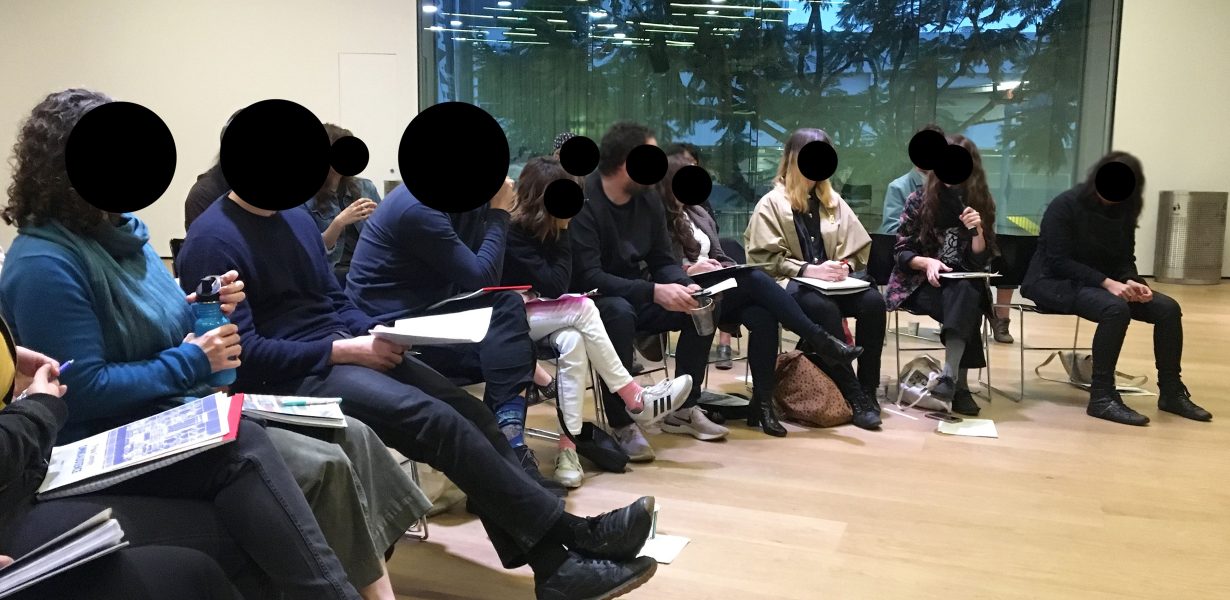From Simon Schama’s museum audio tours to podcasts examining ecology and art history, what to listen to when you’re tired of screens
A few weeks into lockdown, I had a series of ocular migraines. Each progressed in a predictable way. A hairline crack of iridescence would appear in whatever I was looking at before spreading over my visual field like a crystal growing in a Petri dish, staying there for up to an hour at a time. Pandemic stress was a likely cause. But so was my approach to relieving it. Keen to stay abreast of how artists were responding to lockdown, I’d developed a moth-to-a-flame interest in the flat blue glare of online viewing rooms, video programmes and virtual exhibitions. When short, regular eye-breaks proved an ineffective cure, I decided it was time for a sabbatical from seeing.
In the temporary absence of looking, I engaged with art by listening. The Serpentine Galleries’ podcast, hosted by artist Victoria Sin and curator Lucia Pietroiusti, proved indispensable. By bringing together newly commissioned audioworks, interviews and discussion between guests, the format disrupted boundaries – between music and art, artist and interviewer, ecology and art history – in fluid, off-the-cuff ways that too often elude the stuffy formats of in-person panel discussions and screenings. This air of fluency was partly a technique of audio editing, which can seamlessly join otherwise disconnected voices and sounds, such that people separated by oceans appear to inhabit the same room. During quarantine, this illusion acquired an added emotional nuance, mimicking a closeness that was otherwise impossible. In one episode during lockdown, Pietroiusti remarked to Sin on the experience of cohosting from different locations: “You’re kind of here with me. I mean, you’re in my ears.”

I experienced a version of this sense of community as a listener. During a radio broadcast, simultaneous distribution of sound can approximate a sense of togetherness, in time if not space, that momentarily allows whoever is listening to transcend their geographical isolation and become a member of a dispersed audience. (I’m surely not alone in listening to the radio for precisely this reason.) That this feeling carries through on a prerecorded podcast suggests it may be connected to the feeling – if not the actuality – of liveness intrinsic to conversation. Before the pandemic, what often drew me to museums was being exposed to new ideas, or having preconceived ones tested. In my experience, this tends to happen outside of the relative hush of the galleries: at roundtables and live events, or in the bar afterwards. I wondered whether audio broadcasts could replicate such encounters, creating audiences at a distance when future access to institutions was uncertain, and improvising accessibility for visually impaired people.
A lavish take on this idea arrived a few weeks later in the form of Simon Schama’s The Great Gallery Tours, broadcast in the UK on BBC Radio 4 as lockdown was beginning to ease – as, to my relief, were my migraines. In this series, the historian imaginatively reconstructs, without setting foot in them, four of his favourite museums: the Courtauld, the Prado, the Rijksmuseum and the Whitney. Guided by purling piano music, sound effects and the historian’s engrossing descriptions of his encounters with canonical paintings, the programmes had a floaty, nostalgic feel: I was moving through memory palaces, not galleries. At times, I was reminded that John Reith, the BBC’s first director-general and the son of a Scottish Presbyterian minister, had conceived of radio as a vehicle for moral instruction. In the Prado episode, Schama pauses midway through a mellifluous description of Diego Velázquez’s Las Meninas (1656) to check we haven’t nodded off at the back of the lecture hall: “Still with me? Head spinning, is it?” In the midst of pickets and protests against massive job losses and systemic racial injustice at major arts institutions internationally, the professorial approach felt out of touch.

A more exciting model for how institutions and listening publics might interact took place before the pandemic began. Starting in 2018 and running for a year, Omniaudience, organised by the artist Nikita Gale, was a series of listening events and live discussions at LA’s Hammer Museum, coorganised by the magazine Triple Canopy, which published recorded extracts from the events online. Echoing the genre-agnostic approach of the Serpentine podcast, these events saw critics, artists and musicians examine acoustic biology, Tina Turner, protest music, NASA recordings and archives of Black music, the results ranging in sonic texture from twangy, improvised folk to cerebral discussions interrupted by blasts of jazz and soul. The project explored the idea that a given set of listeners can form what Gale terms ‘a congregation of listeners’ – which presumably includes those, like me, who access the recordings remotely, tuning in months later and from halfway around the world. Recognising that audiences are brought into being whenever sound reaches them won’t compensate for lost ticket sales or cuts to government funding. But it might help artists and institutions alike to counteract the atomising effects of a pandemic, and to continue to reach – perhaps even expand – their publics.
Patrick Langley is a writer based in London and an editor at art-agenda
